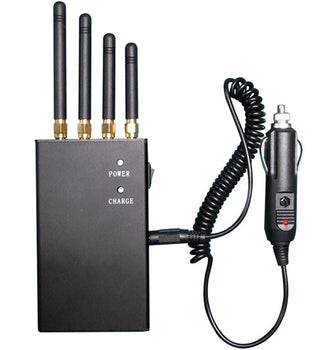Understand the evolutionary history of 1G, 2G, 3G, 4G, 5G communication
The era of 5G network is coming, everyone might have heard that 5G can download 1G movies in as little as 1 second, but what other features do you have? Most people are not aware of the development and differences of each generation of communication technology and even some people involved in communication related works may not be able to understand the differences between them. Today, top signal jammer.com is here to tell you about the history of communication technology for hire.
1G voice era
1G is an analog communication system, the main ones being AMPS, NMT and TACS. In fact, as early as 1940 there were mobile communication phones on the battlefield. In 1941, Motorola developed the SCR-300 intergenerational product, which weighed 16 kg and required a dedicated communications force. The analog communication system used in 1G has many flaws and often has serial number and hacking.
2G text era
In 1995, the new communication technology had matured, and mobile communication officially entered the era of 2G communications. 2G is generally defined as a communication method that does not directly transmit information such as emails and software. The oldest text message also starts. From 1G to 2G, it ranges from analog modulation to digital modulation. In comparison, the second generation mobile communication has a high degree of privacy, the system capacity also increases, but mobile phones can also access the Internet from of this generation. People can only browse certain textual information.
The first mobile phone that supported WAP was Nokia, its appearance marked the beginning of the era of mobile Internet, and the speed of the GSM network at that time was only 9.6 KB / s. Over the next 10 years, Nokia gradually became the world's largest mobile operator.

3G image era
As the demand for mobile phone networks continues to increase, third generation mobile communication networks must develop new standards on new spectrum and benefit from higher data transmission rates. In 3G, with high bandwidth and stable transmission, video telephony and large-scale data transmission are more common, and mobile communication has more various applications, 3G is regarded as an important key to usher in a new era of mobile communications. Tablet PCs supporting 3G networks have also made their appearance to date: Apple, Lenovo and Asus have released a number of excellent tablet products.
4G video era
4G refers to the fourth generation wireless cell phone communication protocol, which has the characteristics of faster speed, flexible communication, high intelligence, high quality communication and low cost, and can meet the requirements of almost all users when it comes to wireless services. It can transmit high-quality video images and image transmission quality, and can reach a download speed of more than 100Mbps. The 4G system mainly includes LTE, TD-LTE, FDD-LTE technologies. 4G signal coverage is now very extensive, many tablets Calling functions, Android on the network and Win system tablets are also very common.
5G era of the Internet of Things
5G, the fifth generation mobile communication technology, ITU divides the application scenarios of 5G into two categories: mobile internet and internet of things. With low latency, high reliability and low power consumption, 5G has a wide range of applications, not only to provide ultra high-definition video, immersive gaming and other interactive upgrade means; it will support mass communication, smart city service and smart home. This will also be the case in industry verticals, such as Internet of Vehicles, Mobile Medical Internet, and Industrial Internet. Simply put, 5G is faster, more secure, generates stronger signals, covers a larger area, and has a wider range of applications. With the continued promotion of 5G networks, it will further improve everyone's quality of life.













